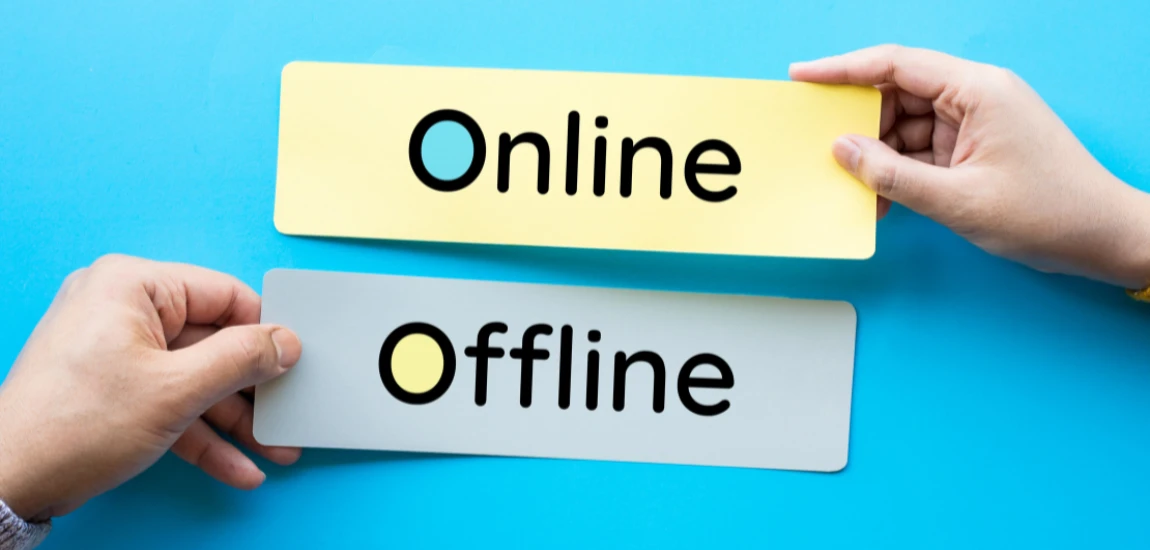Offline for the Algorithm: The Irony of Public Digital Detox

In an age where even silence has a signal, the idea of “going offline” has transformed from a private act of self-preservation into a public performance. What was once a quiet rebellion against screen fatigue and algorithmic control has evolved into an aesthetic—one that ironically thrives on visibility. “Public digital detox” has become a trending keyword itself, a curated moment of absence shared with followers who are told, paradoxically, to “disconnect and reflect.”
This blog unpacks the layered irony behind public digital detoxing: how we narrate disconnection to stay relevant, why “offline” has become a brand identity, and what our algorithmic selves reveal about the desire for authenticity in an age of constant exposure.
The Rise of the Public Digital Detox

The notion of logging off has long been romanticized—a retreat from the noise, a return to presence, a quiet rebellion against the scroll. But today, even the act of stepping away demands documentation. “Taking a break” is no longer a simple act of self-care; it’s a cultural statement, often paired with a soft-focus photo and a caption about mindfulness.
From Self-Care to Self-Branding
Originally, digital detoxing was an antidote to overstimulation. People sought silence, rest, and reconnection with the tangible world. But as wellness culture merged with influencer culture, disconnection itself became a commodity. The “offline weekend” or “social media break” is now part of the influencer toolkit—a way to appear balanced, human, and spiritually aligned, while still feeding the same engagement machine.
The Visibility of Absence
Ironically, announcing your absence is a way of staying present. A post declaring a digital detox signals awareness and moral virtue—“I’m conscious, I’m reflective, I’m not addicted like everyone else.” But in doing so, it still participates in the same attention economy that drives overconnection. Each farewell post, each “see you soon,” becomes an algorithmic breadcrumb that ensures your presence lingers even when you’re supposedly gone.
The Wellness Industrial Complex
The digital detox has been absorbed into a global industry of self-optimization. Retreats, mindfulness apps, and unplugged getaways now monetize our desire for rest. Disconnection is sold as another form of productivity—recharge so you can re-engage better. The result? Even our attempts to escape technology are being mediated, marketed, and measured by it.
The Algorithm Doesn’t Rest—Even When You Do

While you take a break, the algorithm keeps working. It catalogs your silence, predicts your return, and adjusts your visibility based on your inactivity. The idea of escaping the system is largely symbolic; in reality, your digital footprint continues to shape your algorithmic identity even in absence.
The Metrics of Disappearance
Every pause is processed. Platforms like Instagram and TikTok record patterns of activity, and prolonged breaks can trigger reduced reach or algorithmic deprioritization. Users learn this quickly—leading many to schedule “offline” periods strategically, ensuring their detox won’t cost them engagement. It’s a paradox: even rest becomes optimized for visibility.
Silence as Strategy
Creators often frame digital detoxes as part of their narrative arc. “I’m taking time to reflect” becomes a content moment in itself, preparing the audience for a dramatic return. The detox becomes a plot twist—a strategy that humanizes the creator, refreshes their brand, and sparks renewed engagement upon their comeback.
The Algorithmic Afterlife
Even when users step away, their content lives on. Old posts continue circulating, liked, and shared by new audiences. The algorithm recycles their presence, maintaining their digital identity. Thus, being “offline” doesn’t erase your existence—it merely shifts it into a passive, automated afterlife governed by machine logic.
Performative Disconnection: The Aesthetic of Absence

“Logging off” has its own visual language now: muted colors, sunsets, notebooks, books, and cups of coffee replacing phones in the frame. This is not disappearance—it’s rebranding.
Curating Silence
The offline aesthetic is paradoxically polished. Influencers and everyday users alike craft images that symbolize withdrawal—cottage-core cabins, analog journaling, or slow mornings. These posts perform peace, converting absence into an aspirational lifestyle. The result is a new genre of visual storytelling: the aesthetic of anti-digital living.
Minimalism as a Marketing Tool
Minimalism—white spaces, unplugged moments, slow living—sells. Brands leverage the imagery of detachment to market everything from retreats to notebooks. Even “digital detox kits” are packaged with artisanal candles and mindfulness guides. The message is clear: disconnection isn’t rejection—it’s refinement.
The Contradiction of Transparency
Posting about disconnection blurs the line between sincerity and spectacle. The public announcement of privacy becomes performative transparency—a way to show that you could log off, even if the act itself is shared for validation. It’s authenticity as aesthetic, not experience.
Offline as a Brand Identity

In today’s creator economy, your persona doesn’t disappear—it diversifies. Many creators have built their brands around the idea of balance, mindfulness, and “being present.” Going offline becomes part of that brand strategy.
The New Status Symbol: Disconnection
In a hyperconnected world, the privilege to disconnect is itself a marker of status. Those who can afford to be offline—financially, professionally, emotionally—signal control. The ability to step away becomes a kind of luxury, distinguishing them from those tethered to online labor or engagement economies.
Authenticity as a Commodity
The digital detox has evolved into a performance of moral superiority. Being “offline” implies purity and resistance to the algorithmic grind. It communicates integrity—“I’m not trapped by the feed.” But this authenticity, when shared, becomes a commodity itself, carefully packaged for public consumption.
Branding the Self Beyond the Feed
Creators and public figures now extend their presence into offline storytelling—through newsletters, print projects, podcasts, or retreats. The irony? Their offline personas still feed their digital ecosystems. “Offline” is no longer outside the system—it’s an aesthetic within it, marketed as reprieve but monetized as content.
Can We Ever Truly Disconnect?

The fantasy of total disconnection is increasingly difficult to achieve. Our lives—social, professional, and emotional—are integrated with digital infrastructure. Even attempts to escape it often reinforce its omnipresence.
The Infrastructure of Dependence
From navigation to communication, our basic functions rely on connectivity. Going “fully offline” often means opting out of convenience, work, or relationships. The result is selective disconnection: we unplug symbolically, while remaining digitally traceable.
Psychological Attachment to Presence
Beyond utility, there’s a psychological tether. The fear of missing out (FOMO), loss of identity, and disorientation of silence can make digital absence feel like erasure. In a world where visibility equals existence, vanishing feels like a threat to relevance.
The Myth of Escape
Disconnection promises freedom but often delivers nostalgia—a yearning for simplicity in a system built for complexity. True escape may not come from logging off, but from reimagining how we relate to technology itself. The solution isn’t disappearance; it’s conscious participation.
Toward Conscious Connectivity

If we can’t fully unplug, we can at least reshape our relationship with technology. Conscious connectivity means using digital tools deliberately, with awareness rather than reflex.
Reclaiming Attention
The first step toward conscious connectivity is reclaiming attention. Setting boundaries—time blocks, no-scroll hours, notification limits—restores a sense of agency. Attention becomes an act of resistance against algorithmic design.
Digital Rest as Practice
Instead of performative detoxes, we can practice quiet forms of rest—micro-pauses, mindful use, intentional consumption. The goal isn’t to escape technology, but to soften its grip, to create small rituals of stillness within connection.
Redefining Authenticity
Authenticity doesn’t require absence. It requires alignment—posting when it serves purpose, engaging when it nourishes connection, and acknowledging the complexity of living both online and off. The true irony of public digital detoxing is that it reveals what we already know: we don’t need to vanish to be real; we just need to recalibrate what “real” means.



